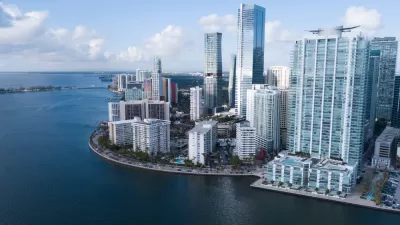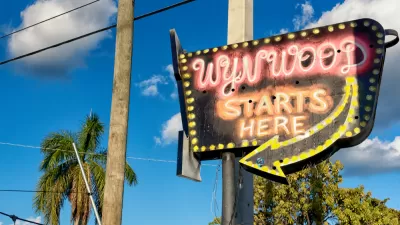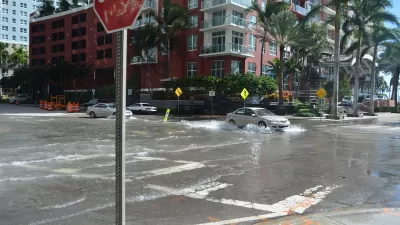Miami 21 was approved in 2009 and heralded as a sign of a new era in zoning. Since then, Miami 21 has been both credited and blamed for the city's transformation.

Andres Viglucci reports on a forthcoming update Miami's zoning code, Miami 21.
Can a simple zoning code — the rules that govern what can be built, and where, and how big it can be — transform a city?
If that code is Miami 21, a once-radical-seeming set of development regulations adopted by the city 11 years ago amid widespread skepticism, the evidence seems to support an emphaticYes [sic].
Viglucci credits Miami 21 with the urban, work-play changes that have come to several neighborhoods in the city in recent years, but also acknowledges the need to update the zoning code for new goals that weren't necessarily on the agenda back in 2009.
Chief among those: Finding ways to promote development of critically needed affordable housing, figuring out new rules for developing projects to meet sea-level rise, reviewing the adequacy of existing zoning for specific city neighborhoods, and addressing issues of equity and gentrification that Miami 21 may have inadvertently helped fuel.
As reported by Viglucci, the city formally launched a special task force of experts and residents, after a COVID-19-induced delay, last week. "Almost certainly, the task force’s 12 members — a mix of architects and planners, developers, land-use lawyers and residents — will wrestle with how, or whether, to limit the massive and sometimes controversial Miami 21 Special Area Plan projects that have become flashpoints of community opposition," writes Viglucci.
FULL STORY: Innovative zoning rules changed Miami. Now Miami 21 may be in for some big changes

Study: Maui’s Plan to Convert Vacation Rentals to Long-Term Housing Could Cause Nearly $1 Billion Economic Loss
The plan would reduce visitor accommodation by 25,% resulting in 1,900 jobs lost.

Alabama: Trump Terminates Settlements for Black Communities Harmed By Raw Sewage
Trump deemed the landmark civil rights agreement “illegal DEI and environmental justice policy.”

North Texas Transit Leaders Tout Benefits of TOD for Growing Region
At a summit focused on transit-oriented development, policymakers discussed how North Texas’ expanded light rail system can serve as a tool for economic growth.

How Community Science Connects People, Parks, and Biodiversity
Community science engages people of all backgrounds in documenting local biodiversity, strengthening connections to nature, and contributing to global efforts like the City Nature Challenge to build a more inclusive and resilient future.

Alabama: Trump Terminates Settlements for Black Communities Harmed By Raw Sewage
Trump deemed the landmark civil rights agreement “illegal DEI and environmental justice policy.”

Dear Tesla Driver: “It’s not You, It’s Him.”
Amidst a booming bumper sticker industry, one writer offers solace to those asking, “Does this car make me look fascist?”
Urban Design for Planners 1: Software Tools
This six-course series explores essential urban design concepts using open source software and equips planners with the tools they need to participate fully in the urban design process.
Planning for Universal Design
Learn the tools for implementing Universal Design in planning regulations.
City of Santa Clarita
Ascent Environmental
Institute for Housing and Urban Development Studies (IHS)
City of Grandview
Harvard GSD Executive Education
Toledo-Lucas County Plan Commissions
Salt Lake City
NYU Wagner Graduate School of Public Service




























